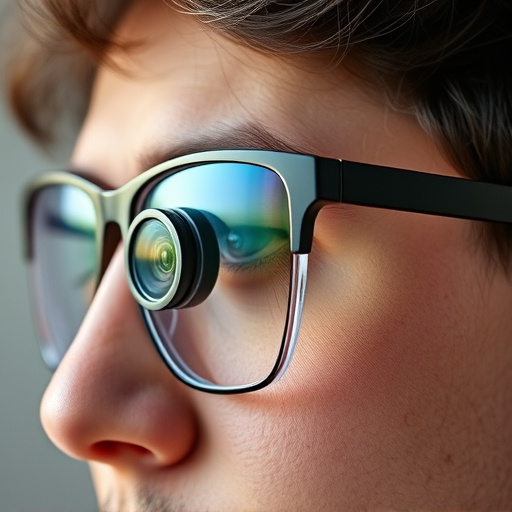Glasses with integrated cameras (smart glasses) are revolutionizing moment capture, offering discreet high-quality photography and videography through simple gestures or voice commands. Popular among active lifestyles and travel enthusiasts, they also enable hands-free calling and augment reality features. However, the rise of "hidden camera glasses" sparks debate between security benefits and privacy concerns, with legal complexities varying by region and raising issues around accountability and copyright. As this technology advances, society needs to engage in discussions to balance innovative uses with individual privacy and community safety.
Glasses with a camera built in, often referred to as hidden camera glasses, are transforming the way we capture moments. These innovative devices seamlessly integrate technology into wearable eyewear, offering discreet and hands-free video recording. In this article, we’ll explore what these glasses are, how they work, their diverse features, and the ethical considerations and legal implications surrounding their use. Get ready to delve into the fascinating world of glasses with a camera built in.
What are Glasses with a Camera Built-in?
Glasses with a camera built-in, often referred to as smart glasses or camera-equipped eyewear, are innovative devices that seamlessly integrate photography and videography functionality into a pair of sunglasses or regular glasses. These cutting-edge spectacles are designed to capture high-quality images and videos, offering users a unique perspective on their surroundings. The integrated camera technology can be activated with a simple gesture or voice command, allowing wearers to discreetly document their experiences without drawing attention.
With the rise in popularity of these smart glasses, individuals can now capture moments of everyday life, travel adventures, or even enjoy hands-free video calls while maintaining a stylish look. The built-in camera offers various features such as photo and video recording, live streaming capabilities, and often includes additional functions like facial recognition, augmented reality displays, and gesture controls for an enhanced user experience.
How Do They Work and What Are Their Features?
Glasses with a camera built-in, often referred to as hidden camera glasses, are sophisticated devices that seamlessly integrate photography and video recording functionality into wearable eyewear. These glasses typically employ mini cameras disguised within the frame, allowing users to capture moments discreetly. The images and videos are then stored internally or transmitted wirelessly to a connected device for review.
Key features of these glasses often include high-resolution sensors, night vision capabilities, motion activation for recording, and long battery life. Some models even offer dual cameras for enhanced field of view and depth perception. With their compact design and versatility, hidden camera glasses cater to various needs, from home security and surveillance to adventurous outdoor activities and everyday vlogging.
Ethical Considerations and Legal Implications
The proliferation of glasses with a camera built-in has sparked significant ethical debates and legal implications. While enthusiasts highlight their potential for personal security, documentation, and enhanced experiences, privacy advocates express grave concerns. These concerns center around the unperceived surveillance these devices can facilitate, raising questions about consent, data protection, and the potential misuse of recorded footage.
Legally, the use of glasses with a camera built-in navigates complex landscapes regarding privacy laws and regulations. What constitutes permissible recording versus unlawful surveillance varies across jurisdictions, adding another layer of complexity. Additionally, the ease of sharing and distributing footage online introduces new challenges in accountability and copyright issues. As this technology becomes more accessible, society must engage in informed discussions to establish guidelines that balance innovation with individual rights and community safety.
